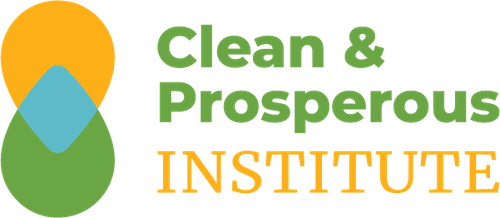(Originally Posted on Plan Washington Website)
Community energy efficiency programs keep Washingtonians working, and conserving energy, while bringing robust economic benefits and improving building stock. This is no accident. Energy planners in the northwest understand that the smartest, most cost-effective way to provide for growing energy needs is to use what we already have more efficiently. The last Northwest Power Plan determined that most new energy needs in the region could be met with efficiency measures costing less than $40 per megawatt hour. That’s half the cost of new electricity from natural gas.
Analysts such as McKinsey & Company have also noted that the critical mass of the most cost-effective solutions to climate change are variations on energy efficiency. And the means of tapping into that efficiency is skilled labor difficult to outsource from the community that benefits.
All this creates opportunity to achieve multiple public policy goals.
In the past few years a new approach – community energy efficiency – has been piloted to help achieve more and deeper upgrades. It differs from the traditional utility rebate models through emphasis on much deeper penetration rates in targeted neighborhoods and, wherever possible, on deeper energy savings in each building touched. If the traditional model picks the lowest hanging fruit, the new approach augments it by bending branches down to bring clusters of fruit into reach.
The Community Energy Challenge is a project jointly managed by the Opportunity Council and Sustainable Connections. We serve Whatcom, Skagit, Island and San Juan Counties and are one of about ten similar programs operating in Washington right now.
Each program is a bit different. In our model we provide discounted energy audits and advice for homeowners and small business owners about what projects make sense to do on their building. We train contractors to meet building performance standards. We augment utility rebates with additional incentives; and we provide third-party quality assurance.
From the building owner’s perspective, we make energy efficiency really, really easy.
By developing clusters of projects and engineering multiple improvements in each building, we achieve economies of scale that cut costs, increase work volume and achieve more energy savings.
Since early 2010 we’ve done assessments on more than 1,700 homes and businesses and completed projects on more than 900 of those. That has yielded about $15 million dollars in direct local economic activity, the majority of which is from private building owners investing in cost-effective improvements to their structures.
This is important for the 25 or so contractors that we work with regularly. They specialize in insulation, HVAC, plumbing, even solar photovoltaics. Many of these companies were hit hard during the recession these projects have helped to keep the companies thriving when there were very few new construction starts. In any given pay period, there are about 85 people getting some or all of their paycheck for working on Community Energy Challenge projects.
The volume of work has helped to transform the local and regional market. As new construction has begun to pick back up, the tools and tricks that these contractors have learned are being applied in new homes.

Business owners are telling other business owners that mini-split heat pumps, LED lights and solar photovoltaics – cells which convert sunlight to electricity – are a good investment.
HVAC companies have trained sales staff to provide comprehensive energy audits.
And realtors have taken notice, with the Northwest Multiple Listing Service now providing better tools to evaluate the comfort, durability and cost savings of energy-efficient housing.
Through a competitive grantmaking process, the Northwest Clean Air Agency recently determined that this was one of the most cost effective ways to reduce greenhouse gas emissions.
The utilities in our area value the work. Puget Sound Energy and Cascade Natural Gas have been important partners in the Community Energy Challenge because they see efficiency as smart energy policy.
The participants in the program make informed decisions about where to spend their limited resources and in doing so stimulate an economic multiplier effect.
It turns out that one of the best ways to fight pollution can stand on its own as smart energy policy and as an effective economic development strategy.
RELATED:
- Community Energy Challenge
- Other Community Energy Efficiency Programs (CEEP) across Washington
- 50-state Rankings, Carbon Competitiveness; Washington Greenhouse Gas Emissions By Sector; Washington Business Alliance
* Editor’s Note: This is a guest authored piece and does not necessarily reflect the views of the Washington Business Alliance.
